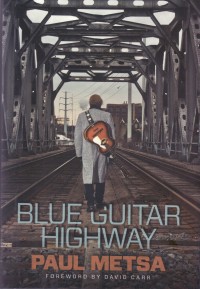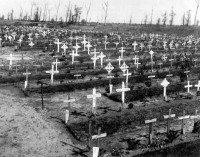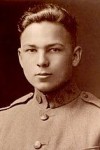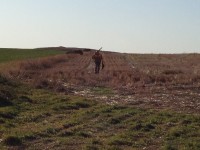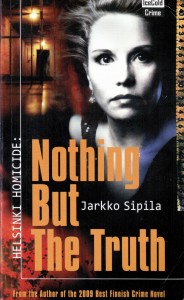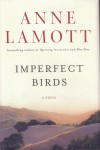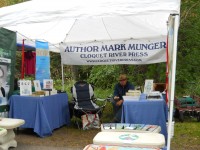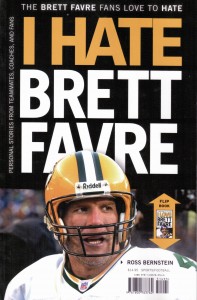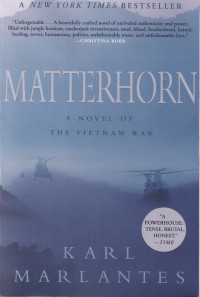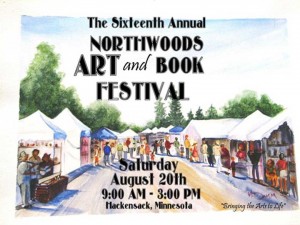Blue Guitar Highway by Paul Metsa (2011. University of Minnesota Press. ISBN 978-0-8166-7642-2)
Bob Dylan. Mark Knopfler. Nils Logfren. Bruce Springsteen. Tom Waits.
You’re asking: “Munger, what the hell do those guys have to do with you writing a review about Minnesota’s hardest working, less-than-a-household-name, guitar slinging Iron Range boy, Paul Metsa?” Fair question, dear reader. Fair question. Well, immediately after finishing Metsa’s memoir of the road, Blue Guitar Highway, having read numerous passages depicting Metsa’s home in North Minneapolis as a virtual library of pressed vinyl, I was so moved by the book, I began pulling out my old LPs: records I haven’t played in at least a decade and started listening to music the way it should be listened to: Pillow under my head, flat on my back, a nice Merlot in hand, the volume way up, and no one else home. Oh, the journey Metsa paints with words isn’t always as pretty or succinct (a couple of scenes were repeated, leaving me with the sense that a bit more editing would have made the book even better), and, as someone else has written, Paul tends to be a name dropper (by repeatedly telling us whom, amongst the gods of rock, folk, blues, and jazz he’s shared a stage with). But in the end, for a first time author of a piece of substantial length, Metsa mostly hits the right notes. In fact, there are portions of the prose that fairly sing, that are as good as it gets in rendering a contemporary life on the page. Consider this passage, towards the end of the book:
Backstage were the musicians-the performers and listeners-who were there to enjoy the evening along with the crowd that was now arriving from all directions. Wherever lifer musicians gather the bonds are felt-those who know the decades of blasts of glory, music itself a life-lasting love. Followed by rejection, broken-down cars, the times in sickness and in health, other band members, friends at first, only in it for the money (like there ever was any) who will jump ship for a few dollars more. The slow suicide of drugs and booze that lurks in the guise of midnight angels and whiskey queens, sirens who call from corners with the dove-like eyes of your first true love, but the intent of prostitutes who follow the feet of their victims in the quicksand of slow and meaningless death. Bar owners, booking agents, and record labels that could give a good goddamn. Audiences more interested in pinball or pool tables or television screens, the band on the stage nothing but a bother. Death and destruction, love many times lost, and the occasional one-night stand hotter than the skillet of a New Orleans short-order cook…Or real love with a human touch made to last with lovers sometimes drawn from opposite magnetic poles that proved marriage was possible and strong like David’s slingshot against the Goliath that was the music business, sweeter than honey…Building families that stand the test of time and kids that are now musicians themselves. Or the kids who never knew Daddy’s name, and some only remembering it as long as child support was paid on time, the waiting for that to come around, as music is nothing if not the discipline of hope. And all the rest-the poison gigs and the majestic ones that vanish as quickly as they came, all the things you could only wish would happen but would never bet on-that reminded us why were here in the first place, like black-robed priests who take an oath of poverty…whose faces we never saw but whose presence we always felt…
(p. 251, Blue Guitar Highway)
See what I mean? Metsa uses his talents as a songwriter and lyricist to full advantage. His prose sets us to laughing, crying, and remembering often within the same sentence. Honesty (regarding Metsa’s success as a musician and in his personal life) drips onto the pages of this hard-wrought memorial like sweat from The Boss on a great night on the stage. Sure, as some critics have complained, there’s some gratuitous name dropping here and there in the story. Teaching Bruce Springsteen the three chords of a Woody Guthrie song before playing en masse in a Rock and Roll Hall of Fame tribute to Woody. Is that incident significant enough to record for posterity? Sure it is if, as is likely, this is your one opportunity to tell your story. The fact that Springsteen asked and Metsa answered, yeah, I’d say that’s worthy of reportage, in an honest, off-hand sort of way. Which is exactly the way it comes off in the passage. Those who have criticized the occasional name dropping (or, in the case of one insensitive jerk ( Michael Adams) in his Amazon.com “review”, Metsa’s creds as a musician) are missing the point of this journey: Paul Metsa is not Bob Dylan. Hate to confuse you folks, but Metsa doesn’t claim he wrote anything as world changing as “Blowing in the Wind” or altered the face of music by his work on the stage. What he’s chronicling (to steal the title to Dylan’s own memoir) is something that this writer is very familiar with: The day to day grind of trying to make a name for yourself in the ever-confusing, cut-throat world of popular culture and art. Just like Metsa, I’ve logged tens of thousands, nay, likely hundreds of thousands of miles, hawking my books in the U.S., Canada, and Finland. And I’ve only been at it ten years. Metsa has been walking the Blue Guitar Highway for over forty years. And he’s done it despite rejection, personal loss, money woes, dependency demons, and all the other gremlins that leap up to smack an artist down. There is tremendous value in this story of sweat and blood and tears: It lets the rest of the world know, those folks that think you simply pen a song or a novel and toss it towards an agent and become instantly famous and wealthy, that such stories are fantasy and don’t bear any resemblance to the grit and toil of the real world of a musician, artist, or writer.
In a nutshell: This memoir belongs on any music fan’s bookshelf. It’s sitting on mine, as I finish this review, next to Dylan’s Chronicles, David Crosby’s Long Time Gone, Neil Young’s Shakey, and Guthrie’s Bound for Glory. Metsa has captured a life not yet completed: Let’s hope he tells us more.
4 and 1/2 stars out of 5.
(Note: Buy this book and, if you like what you read, log on to: http://www.amazon.com/Blue-Guitar-Highway-Paul-Metsa/dp/0816676429/ref=sr_1_fkmr0_1?ie=UTF8&qid=1321106475&sr=8-1-fkmr0 and add your review. I’m serious: Michael Adams, whoever the hell he is, trashed Metsa for no apparent reason. There’s no substance, no actual critique of the book contained in Adams’s review, and yet, Adams felt sufficiently mean-spirited to give the book one star. Peruse my book reviews on this site: The only book I’ve ever given one star was The Book of Mormon! Not for its content but for its readability. Give an honest assessment of Blue Guitar Highway on Amazon because, in my view, a one star rating wrongfully diminishes the beauty and value of the book.)

